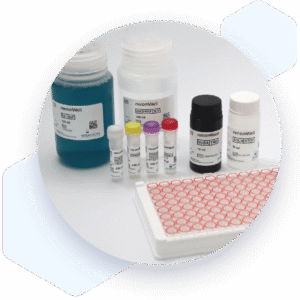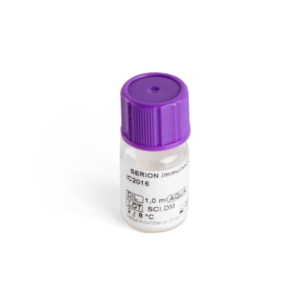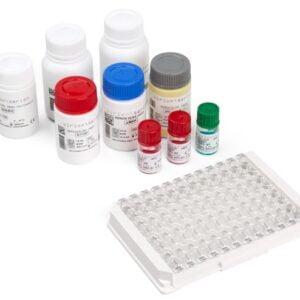| Weight | 1 lbs |
|---|---|
| Dimensions | 9 × 5 × 2 in |
| target | Chlamydia reactive IgA |
| species reactivity | Chlamydia |
| applications | ELISA |
| assay type | Indirect & quantitative |
| available sizes | 96 tests |
Chlamydia IgA ELISA Kit ESR137A
$364.00
Summary
- Virion/Serion Diagnostic Kit for research use (RUO)
- Chlamydia IgA ELISA Kit
- Suitable for IgA detection
- Ready-to-use
- 96 tests
Chlamydia IgA ELISA Kit ESR137A
| kit | ||||||||||||||||||
|---|---|---|---|---|---|---|---|---|---|---|---|---|---|---|---|---|---|---|
| Assay type Indirect ELISA | ||||||||||||||||||
| Research area Infectious Disease | ||||||||||||||||||
| Sample type Serum, plasma, whole blood | ||||||||||||||||||
Components
| ||||||||||||||||||
| Storage Store at 2-8°C. | ||||||||||||||||||
| Associated products Chlamydia pneumoniae COMC Antigen (BA1371VS) Chlamydia pneumoniae EB and RB Antigen (BA1371VSER) Chlamydia pneumoniae IgA Control Serum (BC1371A) Chlamydia pneumoniae IgG Control Serum (BC1371G) Chlamydia pneumoniae IgM Control Serum (BC1371M) Chlamydia pneumoniae IgA ELISA Kit (ESR1371A) Chlamydia pneumoniae IgG ELISA Kit (ESR1371G) Chlamydia pneumoniae IgM ELISA Kit (ESR1371M) Chlamydia IgA ELISA Kit (ESR137A) |
| target relevance |
|---|
| Organism Chlamydia abortus |
| Protein names Chlamydia |
| Structure and strains Chlamydia abortus is a species in Chlamydiota that causes abortion and fetal death in mammals, including humans. Chlamydia abortus was renamed in 1999 as Chlamydophila psittaci along with all Chlamydiota except Chlamydia trachomatis. This was based on a lack of evident glycogen production and on resistance to the antibiotic sulfadiazine. In 1999 C. psittaci and C. abortus were recognized as distinct species based on differences of pathogenicity and DNA DNA hybridization. In 2015, this new name was reverted to Chlamydia |
| Detection and diagnosis Approximately two weeks after the first symptoms of a primary infection an increase of the IgA and IgM antibody activity occurs, which peaks after five weeks and usually declines by the 10th week. The IgG antibody activity reaches a maximum around week twelve and remains detectable for several years. In cases of reinfection IgA and IgG antibodies reappear rapidly. |
Data
Publications
| pmid | title | authors | citation |
|---|---|---|---|
| We haven't added any publications to our database yet. | |||
Protocols
| relevant to this product |
|---|
| ESR137A protocol |
Documents
| # | ||
|---|---|---|
| Please enter your product and batch number here to retrieve product datasheet, SDS, and QC information. | ||
Only logged in customers who have purchased this product may leave a review.




Reviews
There are no reviews yet.